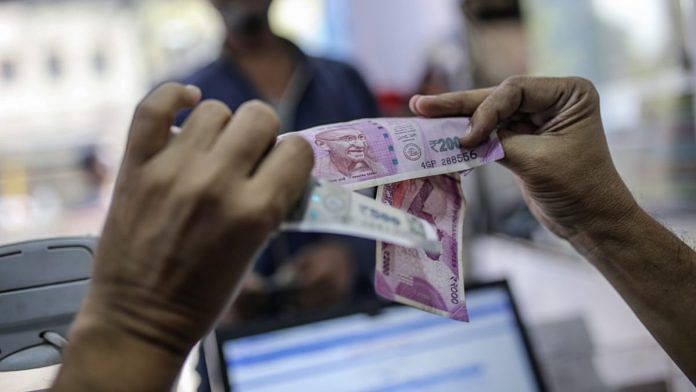With support for globalization and free trade declining in much of the world, Asia has a historic chance to break out of its traditional role as a capital exporter to the West and to instead redirect flows to improve its own economies and financial industries.
According to some estimates, the region’s pool of wealth at $110 trillion exceeds those of North America and Europe and is growing faster. Japan and China were at or near the top of foreign portfolio investment in the United States, including stocks and short- and long-term bonds, in 2017 with $2 trillion and $1.5 trillion respectively, a U.S. Treasury survey showed.
Yet Asia has a poor record of protecting its assets stranded overseas when the cycle turns. In the 1990s, Japanese investors incurred significant losses, primarily on property. During the 2008 crisis, a range of Asian sovereign wealth funds and high net-worth individuals lost heavily on advanced economy shares, real estate, and mortgage-backed and structured securities.
Also read: Rupee becomes Asia’s worst performer, poses risk to bond investors
The desire to invest overseas partly reflects concern about political risk and governance at home. But leaving familiar territory brings other risks.
Distance, language and cultural differences can put Asian investors at a disadvantage when it comes to information. As a result, investors often rely too heavily on intermediaries whose interests don’t align with their own.
Their main failing, though, is a bias toward certain assets. In an echo of the ill-fated Japanese purchases of Rockefeller Center and the Pebble Beach golf course in the 1980s, Asian investors are buying prime office buildings in New York and London. Swanky apartments are quickly snapped up in world cities, especially by Chinese buyers.
Lacking cozy domestic informational networks, Asian investors are particularly susceptible to chasing name asset managers or fashionable businesses. That restricts their options since the best funds are frequently closed to new arrivals. Managers often can’t repeat past results.
Inadequate expertise frequently leads to unwise choices. In the run-up to 2008, Asian banks and investors suffered losses on purchases of structured products and collateralized debt obligations, or CDOs. High net-worth and retail segments are buying again. Japanese banks have purchased up to 75% of AAA tranches of collateralized loan obligations, and perhaps one-third of all CLOs, which have common features with CDOs.
Where investments are leveraged, they must be financed by borrowing dollars and euros in wholesale markets. Losses may create difficulties in rolling over funding. As in 2008, forced sales and the lack of trading liquidity will accelerate declines in prices.
Why look abroad at all? There is a mismatch between Asian savings and the size of domestic capital markets, which are marked by low returns, a smaller range of investment products and limited local expertise. The regional rivalries between Singapore, Hong Kong, Shanghai, Mumbai and Tokyo and a bias toward real industry have hampered the development of financial services.
Also read: PM Modi has a new problem: Confidence of Indians in economy drops sharply
Asia lacks quality indigenous banks such as JPMorgan Chase & Co. or The Goldman Sachs Group Inc., or asset managers such as BlackRock Inc. or Pacific Investment Management Co. Most financial institutions are domestically focused. In 2018, assets under management at Asian hedge funds fell 10% to just over $100 billion, a mere 3% of the global total. Private wealth management remains the preserve of Western firms.
Asia’s high savings are a global anomaly, driven by rising incomes, a culture of thrift and minimal social safety nets. Governments need to move with greater determination to enable more savings to be absorbed locally. The timing may be right as the world is tilting more toward national interests and self-sufficiency.
The first step must be to accelerate development of capital markets to boost size, depth, liquidity and investment choices. Revised listing and issuance rules, harmonized pan-Asian regulations, breakups of family dominated conglomerates, and partial or full privatization of key state-owned firms would improve market depth. Changes in rules and tax incentives should encourage local pension funds or insurance companies to adopt stable, long-term investment practices.
Second, the creation of world-class financial institutions and skilled asset managers needs to be a priority. To attract the best and brightest, limited career choices and pay that lags behind international levels need to be addressed. State-sponsored financial skills training and accreditation systems should be improved. A system of mutual recognition of qualifications would increase labor mobility.
Finally, retaining capital within Asia requires improving confidence in the security of savings. Key steps include creating independent institutions free from political interference, as well as bolstering the rule of law and transparent and consistent regulations. Singapore and Hong Kong, despite its recent protests, are examples to emulate.
Without change, the familiar cycle of exuberant foreign investment and the loss of Asian wealth is likely to be repeated in the next downturn. – Bloomberg
Also read: World’s biggest banks sink to record lows as China pain spreads






